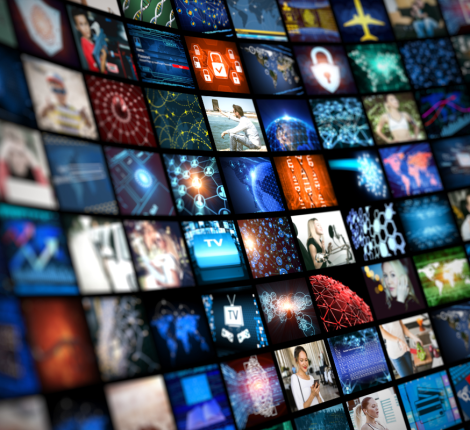Real Estate Newsletter – Applicability Of Stamp Duty On Various Instruments In Maharashtra: July 2023
Introduction
Stamp duty is levied on various types of instruments to legalize them. The government of Maharashtra levies stamp duty on various instruments such as agreements, deeds, and conveyances.
Overview of Stamp Duty
What is Stamp Duty
Stamp duty is a type of tax that is levied on various documents and transactions in India. It is essentially a form of revenue that is collected by the state government. Some of the documents and transactions that may be subject to stamp duty in India include
- Property transactions such as sale deeds, lease agreements, and mortgage documents.
- Share transfers and debentures.
- Power of Attorney agreements.
- Insurance policies.
- Partnership deeds and other business agreements.
The amount of stamp duty payable depends on the type of document or transaction, the value of the property or transaction, and the state in which it is being carried out. Stamp duty rates can vary widely across different states in India. In general, stamp duty must be paid before the document can be considered legally valid.
Purpose of Stamp Duty
The purpose of stamp duty in India is to serve as a legal tax levied by the state government on various documents and transactions to ensure their legality and enforceability. When a document or transaction is stamped with the appropriate duty, it becomes admissible in court as evidence and can be used as proof of ownership, transaction, or agreement. Stamp duty also helps in revenue generation for the state government.
In addition, stamp duty acts as a deterrent against fraudulent or illegal transactions, as parties involved in such transactions may avoid paying stamp duty, and as a result, the document may be considered invalid in court. By requiring stamp duty payments, the government can track and monitor various transactions, such as property transactions and share transfers, and ensure that they are carried out legally and with appropriate revenue generation. Overall, the purpose of stamp duty is to facilitate transparency and legality in various transactions, while generating revenue for the state government.
Applicability of Stamp Duty
Stamp Duty is applicable on various documents, including Property sale agreements and Leave and License (rental) agreements, among others. The Stamp Duty in Maharashtra is usually in the range of 3-7 % of the consideration value mentioned in the document and nature of the document. This rate of Stamp Duty varies from state to state.
Key Instruments on which Stamp Duty Applicable
Applicability of Stamp Duty on Conveyance Deed
Stamp duty is calculated on the Market Value of the Subject Property in the following manner:
1. If Conveyance is related to movable property:
- 3 % of the market value of the property.
2. If Conveyance is related to immovable property situated within the limits of any Municipal Corporation, Municipal Council or Nagar Panchayat or any Cantonment area or any rural area within the limits of the Mumbai Metropolitan Region Development Authority, or the Influence Areas as per the annual statement of rates published under the Bombay Stamp (Determination of True Market Value of Property) Rules, 1995:
- 5 % of the market value of the property.
3. If Conveyance is related to immovable property situated within the limits of any Grampanchayat area or any such area not mentioned in clause (ii) above.
- 4 % of the market value of the property.
Note: The Maharashtra government in its Budget for 2021-22 announced a concession of 1% over the prevailing stamp duty rate on property transactions if the transfer of house property or registration of a sale deed is done in the name of women.
Applicability of Stamp Duty on Lease Deeds (including an under-lease or sub-lease and any agreement to let or sublet or any renewal of lease):
1. For a period not exceeding five years:
- 10% of the amount calculated at 3% of the market value of the property, if related to movable property.
- 10% of the amount calculated at 5% of the market value of the property, if related to immovable property situated within the limits of any Municipal Corporation, Municipal Council or Nagar Panchayat or any Cantonment area or any rural area.
- 10% of the amount calculated at 4% of the market value of the property, if related to immovable property situated within the limits of any Grampanchayat area or any such area not mentioned above.
2. For a period exceeding five years but not exceeding ten years:
- 25% of the amount calculated at 3% of the market value of the property, if related to movable property.
- 25% of the amount calculated at 5% of the market value of the property, if related to immovable property situated within the limits of any Municipal Corporation, Municipal Council or Nagar Panchayat or any Cantonment area or any rural area.
- 25% of the amount calculated at 4% of the market value of the property, if related to immovable property situated within the limits of any Grampanchayat area or any such area not mentioned above.
3. For a period exceeding ten years but not exceeding twenty-nine years
- 50% of the amount calculated at 3% of the market value of the property, if related to movable property.
- 50% of the amount calculated at 5% of the market value of the property, if related to immovable property situated within the limits of any Municipal Corporation, Municipal Council or Nagar Panchayat or any Cantonment area or any rural area.
- 50% of the amount calculated at 4% of the market value of the property, if related to immovable property situated within the limits of any Grampanchayat area or any such area not mentioned above.
4. For a period exceeding twenty-nine years or not having a definite period:
- 90% of the amount calculated at 3% of the market value of the property, if related to movable property.
- 90% of the amount calculated at 5% of the market value of the property, if related to immovable property situated within the limits of any Municipal Corporation, Municipal Council or Nagar Panchayat or any Cantonment area or any rural area.
- 90% of the amount calculated at 4% of the market value of the property, if related to immovable property situated within the limits of any Grampanchayat area or any such area not mentioned above.
Applicability of Stamp Duty on Gift Deeds
Stamp duty rates applicable to Gift Deeds, Instruments not being a Settlement or Will or Transfer:
1. If the Gift is related to movable property:
- 3 % of the market value of the property.
2. If the Gift is related to immovable property situated within the limits of any Municipal Corporation, Municipal Council or Nagar Panchayat or any Cantonment area or any rural area within the limits of the Mumbai Metropolitan Region Development Authority, or the Influence Areas as per the annual statement of rates published under the Bombay Stamp (Determination ofTrue Market Value of Property) Rules, 1995:
- 5 % of the market value of the property.
3. If Gift is related to immovable property situated within the limits of any Grampanchayat area or any such area not mentioned in clause (ii) above.
- 4 % of the market value of the property.
4. Provided that, if the property is gifted to a family member being the husband, wife, brother or sister of the donor or any lineal ascendant or descendant of the donor, then the amount of duty chargeable shall be at the rate of 3 % on the market value of the property which is the subject matter of the gift.
5. Provided further that, if the residential and agricultural property is gifted to husband, wife, son, daughter, grandson, granddaughter, or wife of a deceased son, the amount of duty chargeable shall be rupees two hundred.
Applicability of Stamp Duty on Mortgage Deeds:
1. When possession of the property or any part of the property or any part of the property comprised in such deed is given by the mortgagor or agreed to be given, the stamp duty on such deed will be calculated as follows:
- If the Mortgage is related to movable property:
3 % of the market value of the property. - If the Mortgage is related to immovable property situated within the limits of any Municipal Corporation, Municipal Council or Nagar Panchayat or any Cantonment area or any rural area within the limits of the Mumbai Metropolitan Region Development Authority, or the Influence Areas as per the annual statement of rates published under the Bombay Stamp (Determination ofTrue Market Value of Property) Rules, 1995:
5 % of the market value of the property. - If the Mortgage is related to immovable property situated within the limits of any Grampanchayat area or any such area not mentioned in clause (ii) above.
4 % of the market value of the property.
2. When possession is not given or agreed to be given as aforesaid:
- If the amount secured by such deed does not exceed rupees five lakhs:
0.1 % of the amount secured by such deed, subject to a minimum of one hundred rupees.
3. In any other cases:
- 0.3 % of the amount secured by such deed, subject to a maximum of twenty lakh rupees.
4. When a collateral or auxiliary or additional or substituted security, or by way of further assurance for the purpose mentioned above where the principal or primary security is duly stamped.
- Rs. 500/-
Applicability of Stamp Duty on Leave and License Agreement
1. Where the leave and licence agreement purports to be for any term with or without a renewal clause:
- 0.25 % of the total sum of (a+b+c)
- The licence fees or rent payable under the agreement; (+)
- The amount of non-refundable deposit or money advanced or to be advanced or premium by whatever name called; (+)
- The interest is calculated at the rate of 10 % per annum on the refundable security deposit or money advanced or to be advanced, by whatever name called.
Exemptions and Concessions
Certain categories of property transactions may be eligible for exemptions or concessional stamp duty rates. These include transactions involving women buyers, affordable housing projects, charitable institutions, and government bodies.
Consequences of non-payment of Stamp Duty
Penalty involves a fine or even imprisonment. Delay in payment of property Stamp Duty will draw a penalty at the rate of 2% per month on the deficit amount of the Stamp Duty and a maximum penalty of 200% of the deficit amount of the Stamp Duty.
Conclusion
In general, stamp duty is an important source of revenue for governments and plays a critical role in regulating the transfer of property and other legal documents. It is an essential component of the legal system and helps to ensure the authenticity and legality of transactions.





